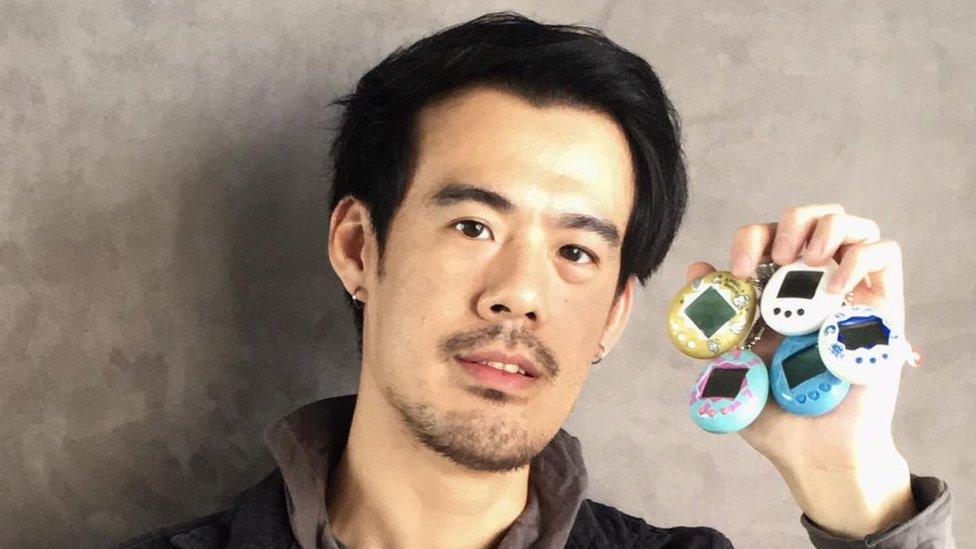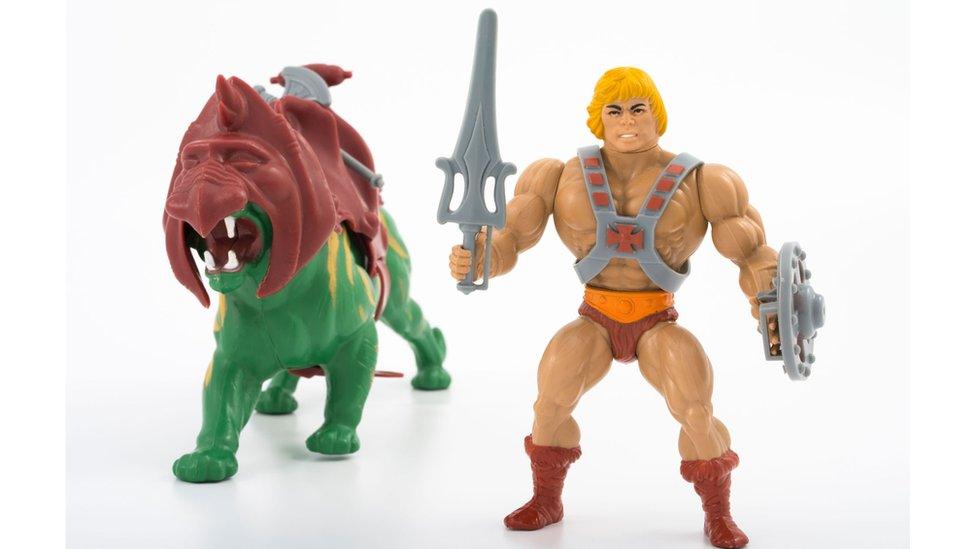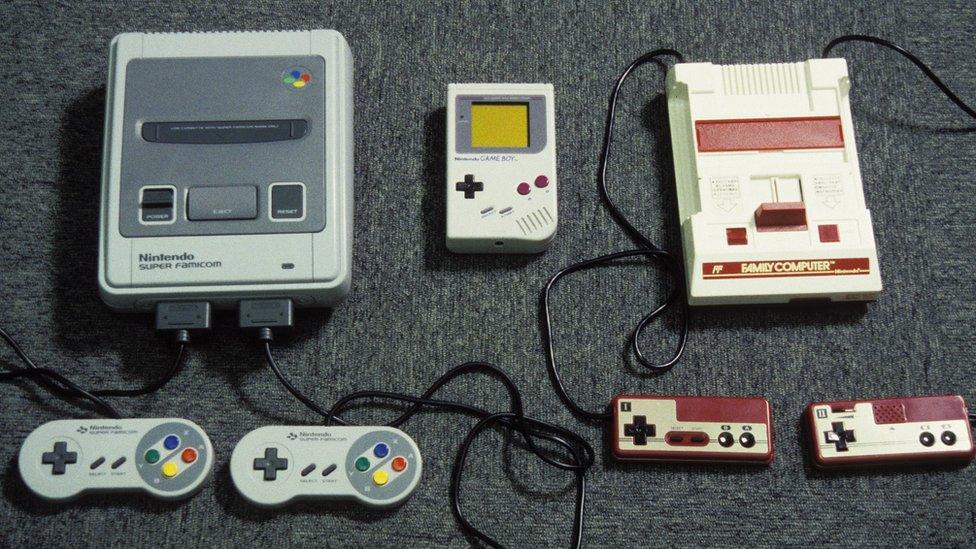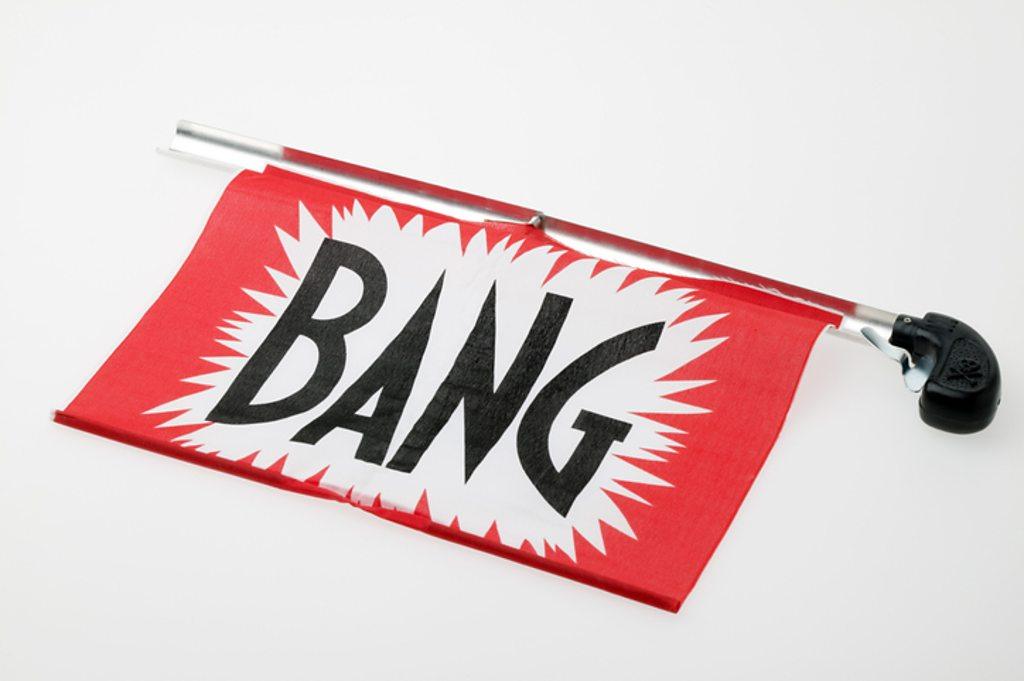Tamagotchi returns in wave of 1990s nostalgia toy joy
- Published

Josiah Chua holds his collection of Tamagotchis
Back when he was at school in the 1990s, Josiah Chua says "everyone" had a Tamagotchi. The 31-year-old remembers how the playground buzzed with kids addicted to their digital pets.
"I don't think we were allowed to take it to school. We tried to sneak them in our school bags," the Singapore-based fashion stylist says.
Mr Chua's is probably a fairly typical millennial memory.
The toy - an egg-shaped, plastic pet that its owner had to keep "alive" with constant care and attention - was the must-have item not long after its launch in 1996.
It's about to make a comeback. Japanese manufacturer Bandai will release an all-colour, new and improved version of the classic toy in North America in July.
This time round, it can do more than eat, sleep, beep and die.
It's evolved from a pet into more of a character, Bandai says, that can inhabit different lands, as well as get married and breed.
"Our fanbase is already very excited and has done pre-orders," Bandai America's Director of Marketing Tara Badie says about the Tamagotchi On.
It turns out the gadget never really went away - Bandai frequently releases new Tamagotchis in Japan and other markets - but the latest model is part of a wave of 1980s and 1990s symbols reinvented for new generations.
Take Sonic the Hedgehog: the Sega character will hit movie screens next year.
The Spice Girls are touring and The Face is back. You can buy scrunchies on luxury fashion site Net-a-Porter.
Retro revival
Mintel Retail Analyst Chana Baram says there's been a spike in the number of retro goods making a comeback as people search for comfort in the "good old days".
"We're used to it in clothing and fashion but it's become more talked about in terms of old products."
It's a trend also observed by Italy-based toy seller Alessio Di Marco, whose company Tons-of-Toys sells vintage items and collectibles.
Over the past year he's seen a "strong rise in interest in toys from the 1990s" like Teenage Mutant Ninja Turtles, Power Rangers and Polly Pocket.

Battle Cat and He-Man figurines from 1982
Mr Di Marco says there's also plenty of appetite for the "fabulous decade of Disney movies" starting from 1989's The Little Mermaid, to Beauty and the Beast, Aladdin and The Lion King amongst others.
"The children of the 1990s have grown up and are increasingly nostalgic for the toys of their childhood," he says.
Those adults can now afford to buy things they want. But the nostalgia opportunity for brands runs deeper than that.
A recent Mintel survey found 57% of toy buyers in the UK said they like to purchase toys for their child that they also played with.
"Everyone thinks of their childhood as great and thinks 'Oh, things weren't as bad then'," Mintel's Ms Baram says.
Why nostalgia works
For brands and advertisers, playing on feelings of nostalgia isn't new.
It's one element of a wider marketing strategy that looks to entice consumers through escapism.
"In particular, going back to the very idealised associations of your childhood," says Ogilvy's Chief Strategy Officer for Asia Benoit Wiesser.
He says memories of our formative years - the music, fashion, toys and games - are encoded in our brains for life as a store of happy feelings.
So playing with a Nintendo Gameboy or a Transformer triggers these fond associations and gets "the chemistry flowing again".
"The moment you pick it up, it comes loaded with all this richness and association and this feel-good factor," Mr Wiesser says.

A shot of Nintendo games consoles taken in 1992
He says nostalgia may be "something that's more salient" right now, in part driven by a questioning attitude adopted by many millennials and those in generation Z.
"There isn't necessarily one belief system about how we move forward from here."
That uncertainty can help create an environment for nostalgic themes to resonate, as it is a particularly effective strategy when people feel uncertain and need reassurance.
"There's definitely a correlation between the popularity of nostalgia marketing versus how confident, optimistic and secure a particular population feels," Mr Wiesser adds.
New fans
Still, brands can't just stay still. Mr Wiesser says companies have to keep reinventing themselves with fresh products as trading on past glories won't be enough.

The original Tamagotchi (L) was released in Japan in 1996; the Tamagotchi On (R) will be released in July
Bandai is hoping its Tamagotchi On, which is aimed at girls aged 6 to 12 years, is stacked with enough new features to hook a group of tech-savvy young fans.
Tamagotchi loyalist Mr Chua is also excited to find out what feelings the new gadget - decades on from the original - can draw out.
"Having the new version could help you remember the child in you."
- Published31 May 2019

- Published23 December 2018

- Published10 May 2019
